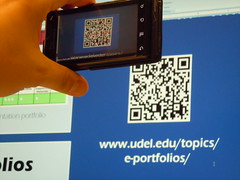
From time to time new trends and innovative practices take over the language classrooms. From video cassettes and cd players to computers and interactive boards, emerging technology has always been present in the lives of teachers. Some innovations are easy to deal with, others require patience, skills and a lot of creativity. In recent years, a lot has been talked about "m-learning", that is, the use of mobile devices (such as smartphones and tablets) in the classroom.Smartphones and tablets are gadgets that have come to stay and we teachers cannot deny their existence anymore. For teachers who are concerned about being up-to-date with the latest trends, it is paramount that they learn how to operate those state-of-the-art devices and get used to new lingo, such as APPs. By the way, do you know what APPs are?
As a matter of fact, like any other new technology that comes out in the market, the use of mobile devices in the classroom has already caused a great stir and generated a lot of controversial opinions. Our challenge, as teachers, is to find creative and effective ways to use these devices in classroom so as to promote learning in the classroom. Some experts believe that it seems to be a much wiser decision to find ways to incorporate the students' most beloved and inseparable object into the lessons than just saying to turn them off as they enter the classroom. By the way, have you already seen how many amazing (and sometimes unbelievable) things those little objects are capable of? Have you ever considered the colossal potential they have to turn learning into something more exciting and alluring to students of the 21st century?
But some questions might be already popping in your mind:
How do I get started?
How can I effectively use a smartphone or tablet with my groups?
What APPs do I use?
The answers to these questions have not been completely answered yet and the light at the end of the tunnel is still a little blurry. However, the more teachers experiment with this new technology, the clearer the light at the end of the tunnel will be! So this is the time to plunge into this ocean called "m-learning" in search of all the questions that need to be answered. Visit internet pages specialized in m-learning, google your questions, ask students about the APPS they already know and enjoy, explore your mobile devices, connect with other teachers who are already taking advantage of such devices in their classrooms, etc. I don`t consider myself a specialist and I still need to learn a lot about "m-learning". I`ve just had my first smartphone for 2 months but I have already experimented a bit with it and tried to involve the whole group in my proposed projects. Here are some of the ideas I have already tried:
1. Songify
http://itunes.apple.com/us/app/songify/id438735719?mt=8
This is a very popular app that transforms speech into music. There are different tunes you can use, some for free, some paid.The app has been advertised as free for a limited time. The songs can be shared via e-mail, Twitter or Facebook.
I have used this app in two different ways:
a) Students recorded a short paragraph about themselves using the target grammar structure. Then, classmates had to listen to the mixed song and summarize the information they could understand.
b) Students recorded some sentences about themselves using the target grammar structure. After, I (the teacher) asked some comprehension questions (just like a traditional listening comprehension exercise).
* tips:
a) avoid very long sentences or too much information because the mixing might break the information into chunks and change their order, making comprehension a bit more challenging.
b) results are better achieved if speech is loud and clear when recording.
c) re-songify the speech into a different tune if it`s too difficult to understand (depending on the tune you use, it can make a major difference!)
2. Web Treasure Hunts
You can ask your students to search the World Wide Web for some answers needed for some exercises. In one one my groups, for instance, they had to answer questions about popular bedtime stories. Most of them didn`t know all the right answers, so they promptly looked for information in Google and Wikipedia.
3. Camera
a) Another project that got my students involved in a matter of seconds was asking them to go around the school hallways taking pictures of students, teachers and school staff. This group was learning vocabulary about clothes and physical description, so when they returned to the classroom, I asked them to pair up, show their pictures and describe the people in them.
* I asked the students who didn`t have a camera to pair up with someone else and use the partner`s camera.
b) Once, I assigned a special homework project and, to my surprise, most students really worked on it. They were learning about likes and dislikes, so I asked them to go home , choose a family member and take 5 pictures of objects or situations that would clearly illustrate what that person liked or disliked. When students came to the next class, they sat in groups and shared their pics and talked a bit about their family members.
* Students who didn`t have a smartphone or tablet with a camera, used their portable video games or traditional digital cameras.
So, have some of these ideas inspired you? I hope so! So, what are you waiting for? The future has arrived, it`s time to try out new ideas. One important thing: share with us what you have done in class, this way we can build knowledge together and improve our skills faster.
Let`s "M" that learning!
Vinicius Lemos






